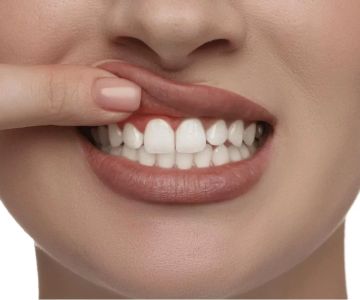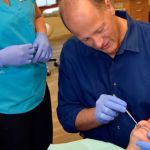When Transitioning from Tube Feeding to an Oral Diet
Transitioning from tube feeding to an oral diet is a significant milestone in a patient's recovery process, whether due to surgery, injury, or a medical condition that impedes normal eating. This change can be daunting, both for the patient and the caregiver, as it involves a shift in feeding methods, dietary considerations, and monitoring the patient’s ability to tolerate solid foods. This process is essential for regaining independence and normalizing the digestive process, but it must be handled carefully to ensure successful adaptation and minimize complications.
1. Understanding the Process of Transition
Tube feeding is typically used when a patient is unable to consume food orally due to a medical condition, surgery, or other health issues. This method delivers nutrition directly into the stomach through a tube, bypassing the mouth and throat. Over time, as the patient’s condition improves, they may be ready to begin transitioning to an oral diet. This process often takes place gradually to allow the digestive system to adjust to consuming food in the traditional manner again.
The transition from tube feeding to an oral diet requires careful planning, patience, and the guidance of healthcare professionals. It is not a one-size-fits-all process, and individual needs will vary depending on the patient’s medical history, recovery progress, and ability to tolerate different foods. Let’s explore how this process works and what steps should be taken to ensure a smooth transition.
2. Preparing for the Transition
Before beginning the transition, a thorough evaluation of the patient’s condition is necessary. This evaluation helps healthcare providers assess whether the patient is physically capable of swallowing food safely. Factors like swallowing reflex, ability to chew, and overall strength play a crucial role in determining whether it’s the right time to start transitioning to an oral diet.
Nutritionists and healthcare providers may develop a customized plan for the transition. This plan often begins with liquid or pureed foods that are easy to swallow and digest, slowly progressing to more solid foods as the patient’s ability improves. The patient will be monitored closely throughout the process to ensure they are tolerating the food and receiving the necessary nutrition.
3. Types of Foods for the Transition
When transitioning from tube feeding to an oral diet, it’s essential to begin with foods that are gentle on the digestive system and easy to swallow. Initially, soft foods and liquids are recommended, as they require minimal effort to consume and pose less risk of choking. Some of the food options include:
- Clear broths and soups
- Pureed fruits and vegetables
- Mashed potatoes and oatmeal
- Yogurt and smooth puddings
- Juices and smoothies
As the patient becomes more comfortable and gains strength, more solid foods can be introduced. This progression is gradual and should be monitored closely. It’s important to observe any signs of discomfort, nausea, or difficulty swallowing, as these could indicate that the transition is happening too quickly.
4. The Role of Swallowing Therapy
For many patients transitioning from tube feeding to an oral diet, swallowing therapy can be an essential part of the process. A speech-language pathologist often plays a significant role in helping patients relearn how to swallow safely. This therapy may involve exercises designed to strengthen the muscles involved in swallowing, improve coordination, and teach the patient proper techniques to avoid choking or aspiration.
Swallowing therapy is particularly important for individuals who have had prolonged periods of tube feeding, as they may have weakened or underdeveloped swallowing muscles. With the right guidance and practice, many patients can regain the ability to eat and drink independently, though it may take time and consistent effort.
5. Monitoring and Managing Risks During the Transition
Transitioning from tube feeding to an oral diet isn’t without its challenges. Patients may face several risks during this process, including aspiration pneumonia, choking, malnutrition, and dehydration. To mitigate these risks, healthcare providers will closely monitor the patient’s progress and adjust the feeding plan as needed. Here are some key concerns to be aware of:
- Aspiration: When food or liquid enters the airway instead of the stomach, it can cause aspiration pneumonia. This risk is particularly high for patients with weakened swallowing reflexes.
- Choking: As patients transition to more solid foods, there is an increased risk of choking. Foods must be prepared and served in a manner that reduces this risk.
- Malnutrition: Transitioning too quickly to an oral diet can result in insufficient caloric intake, especially if the patient is unable to consume enough food to meet their nutritional needs.
- Dehydration: Liquids must be carefully introduced into the diet to prevent dehydration, especially for patients who may struggle with drinking enough fluids initially.
Monitoring the patient's ability to tolerate each step of the transition is vital to ensure that they are not overwhelmed by the process. Healthcare professionals may adjust the diet or introduce supplements if necessary to support the patient’s health during this period.
6. Encouraging Emotional and Psychological Support
Transitioning from tube feeding to an oral diet is not only a physical challenge but also an emotional one. Patients who have relied on tube feeding for an extended period may feel anxious or frustrated about returning to an oral diet. It is essential to provide emotional support and encouragement throughout the process.
Family members, caregivers, and healthcare providers should offer reassurance and be patient as the patient learns to eat again. Additionally, it may help to set small, achievable goals to build confidence and motivate the patient as they regain their ability to eat and drink independently.
7. The Importance of Professional Guidance
It is crucial to involve healthcare professionals at every stage of the transition process. Dietitians, speech therapists, doctors, and nurses all play an integral role in ensuring a safe and successful transition. Their expertise in nutrition, swallowing disorders, and medical care ensures that the patient receives the best care possible during this significant phase of recovery.
When done properly, transitioning from tube feeding to an oral diet can significantly improve a patient’s quality of life, independence, and overall health. Healthcare providers will work closely with the patient to customize a plan that fits their unique needs and pace, ensuring a safe and successful outcome.
SEO Title: Transitioning from Tube Feeding to Oral Diet: A Complete GuideSEO Keywords: transitioning from tube feeding, oral diet, tube feeding to oral diet, swallowing therapy, patient care, dietary transitionSEO Description: Learn how to successfully transition from tube feeding to an oral diet, the role of therapy, food choices, and important precautions for a safe recovery. Visit Dentistry Toothtruth for expert advice and support.






 Family & Cosmetic Dentistry5.0 (4 review)
Family & Cosmetic Dentistry5.0 (4 review) Associated Orthodontists - Joliet4.0 (132 review)
Associated Orthodontists - Joliet4.0 (132 review) Hartsdale Dental Care: Andrew Woo, DDS4.0 (407 review)
Hartsdale Dental Care: Andrew Woo, DDS4.0 (407 review) Just for Kids Dentistry4.0 (325 review)
Just for Kids Dentistry4.0 (325 review) Breakwater Dental4.0 (58 review)
Breakwater Dental4.0 (58 review) Family Dentistry of Westford4.0 (19 review)
Family Dentistry of Westford4.0 (19 review) The Importance of Oral Health Education During Pregnancy for a Healthy Pregnancy
The Importance of Oral Health Education During Pregnancy for a Healthy Pregnancy Best Tips for Brushing Your Teeth Properly for Healthy Gums: Essential Techniques for Oral Health
Best Tips for Brushing Your Teeth Properly for Healthy Gums: Essential Techniques for Oral Health Why Skipping Dental Checkups Can Lead to Bigger Oral Health Problems
Why Skipping Dental Checkups Can Lead to Bigger Oral Health Problems Advantages of Porcelain Dental Restorations
Advantages of Porcelain Dental Restorations How Can Diabetes Cause Tooth and Gum Problems? Preventing and Managing Oral Health Issues
How Can Diabetes Cause Tooth and Gum Problems? Preventing and Managing Oral Health Issues Healthy Habits for Promoting Good Oral Health and Hygiene: Tips for a Healthy Smile
Healthy Habits for Promoting Good Oral Health and Hygiene: Tips for a Healthy Smile